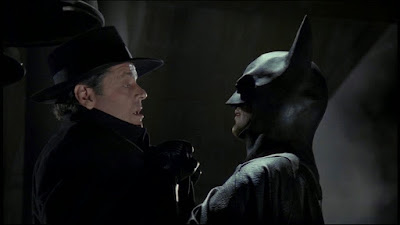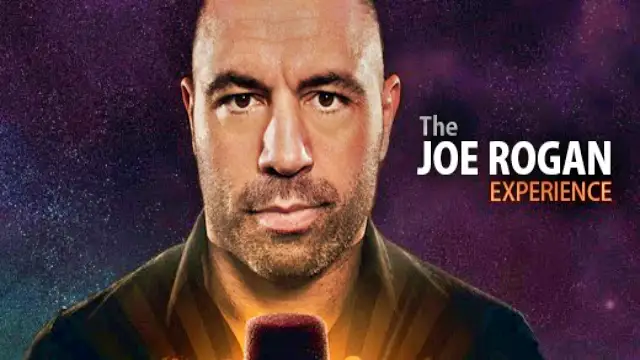n
n
n
n
n
n
n
n
n
nThe story revolves around Jack Napier, a gangster who isntransformed into a freak when Batman throws him into a vat of toxic chemicals.nThe chemicals turn Napier’s skin white and leave a permanent smile on his face.nFrom then on, he calls himself “The Joker”, to him life is now one big bad joke.nHe wants to take over Gotham by making a mockery of them first; he wants tonkill Gothamites with a chemical that kills them from a laughing fit and leavesntheir corpses with a big fat grin on their face. What thrusts this filmsnvillain is his hatred of society, to him society is a joke meant to be laughednat and squashed like a cockroach. He uses society’s greed against them, criticizingna society that revolves around the love for money. To him their lives are “failednand useless” and they have to be relived of them. Moving the story forward isnthe classic good guy mirrors the bad guy motif, one created the other and vicenversa. It’s the classic “freak vs. freak” storyline culminating on top of angothic church, with a duke out between the two freaks. In the balance is thenlife of Vicky Vale, Bruce Wayne’s love interest and the life of all Gothamites.
n
n
n
nAt the center of this film’s success is director Tim Burton.nHaving directed two back to back box office winners: Pee Wee’s Big Adventure (1985)nand Beetlejuice (1986) he was chosen to direct the new Batman film; which hadnbeen under development at Warner. Two comedies like Pee Wee’s Big Adventure andnBettlejuice don’t exactly scream “dark gothic comic book film!”, but we need tonremember that Burton was gothic and dark from the very beginning when he wasnmaking short films like Vincent (1982) and Frankenweenie (1984). So in manynways, he was the perfect choice for taking on the rigors of directing a filmnthat takes place in the ultra gothic Gotham City. Actually, Burton embracednthat Gothic element of the comic books better than any director before or afternhim. Nobody has gone as gothic as he did, which is what sets his bat filmsnapart from all others. Yet, on hindsight, and considering what the producersnwanted to achieve with this movie, I think they chose him precisely because ofnthe comedy. You see, the producers of this here film wanted to make a Bat filmnthat was closer in tone to the television show, so I’m thinking that when theynhired Burton, they thought they’d get this guy who’d make a campy film, a lanthe television show. What they got instead was the soon to be master of goth.
n
n
n
n
nHaving Burton as a director actually saved the film from campinessnhell because producers were always pushing for the campy sense of humor from thentelevision show because they thought that’s what people remembered aboutnBatman, they thought that this is what people would want and would expect fromna Batman movie. Yet for his take on Batman, Burton went for the darkness seennin Frank Miller’s The Dark Knight Returns, a graphic novel that has gone on toninfluence almost every single Batman film to date. Hell, we even see imagesnfrom Miller’s seminal graphic novel in Zack Snyder’s Batman vs. Superman: Dawnnof Justice (2016)! With his graphic novel, Miller stepped away from the campynvibe of the show and what DC had done with the character up to then to presentnus with a dark, aged, pissed off Batman. Burton latched on to that rather thannthe campiness and audiences loved it. Gotham City streets looked shadowy and dangerous,nnot colorful.
n
n
n
n
n
n
n
n
nAfter the filmsnsuccess, it was Bat everything! And it’s true, when we look at Burton’s Bat films,nthere’s something very adult about these movies, the themes, the dialog. InnBatman, Bruce Wayne and Vicky Vale have sex, Jack Napier was screwing Grissom’sngirl, there’s tons of double entendre, more so on Batman Returns (1992) .Yes mynfriends, this Batman film was a strange bird, though it seemed tailor made fornkids, Burton gave it an adult twist. Sure Batman has its origins in comicnbooks, which for the longest time were associated as something strictly fornchildren, but to everyone’s surprise Burton’s film was dark, “adult” andnsexual. What makes it a strange bird is that it didn’t lose that fun comic booknvibe either. We still had the bat mobile, the bat jet and the utility belts! Usuallynfilms that defy their target audience end up as huge failures (The MonsternSquad for example), but Batman walked that fine line and came out winning innthe end.
n
n
n
n
nThe film has a violent edge to it, its heroes and villainsnwere not squeaky clean, in fact, they were on the edge of insanity! Fornexample, The Joker electrocutes someone to the point where he becomes a charrednskeleton. Characters aren’t afraid to kill and be insane, I mean, villains likenNicholson’s The Joker are rarely seen in films these days, today studios prefernto be extremely politically correct, which is just a bore when it comes to anbig bad villain. Back in the 80’s villains were over the top, sometimes takingnover a film as was the case with Batman. It’s Nicholson who steals the show,nwho gives the stand out performance. Nicholson said on many occasions that thisnwas his favorite character, and one can clearly see he is having a blast playingnthe clown prince of crime. It’s so refreshing to go back and see these films,nvillains feel more intense, more evil. Even Batman was a little more intense thannexpected, he actually tells The Joker that he wants to kill him; something thatngoes against what Batman is all about in the comics. Batman doesn’t kill villains,nhe brings them to justice, he sends them to Arkham Asylum. He doesn’t end up killing The Joker, but you could hear it in his voice that that was his intended to do and he would’ve done it, had the Joker not done it himself.
n
n
n
n
n
n
n
n
nSince then, comic book films have come a long way. Today wenget a comic book film every few months, but back then? A good comic book filmnwas a rare thing! And we have two great films to thank for this, Richard Donner’snSuperman (1978) and Tim Burton’s Batman (1989). Both of these films were two giantnsteps for comic book films! They showed that comic book movies, when donenright, had huge money making potential. People embraced them. Between these twonimportant comic book films, it was Batman (1989) that elevated things to anothernlevel, it was simply put an incredibly lucrative hit, the biggest comic booknmovie of its time, an incredible success all across the world. The phenomenonntook a life of its own, but we need to remember that the phenomenon came as anresult of an amazing movie, which remains, in the eyes of this comic book fan,na timeless film worth revisiting timenand time again.
n
nRating: 5 out of 5
n
n
n
n
n





























